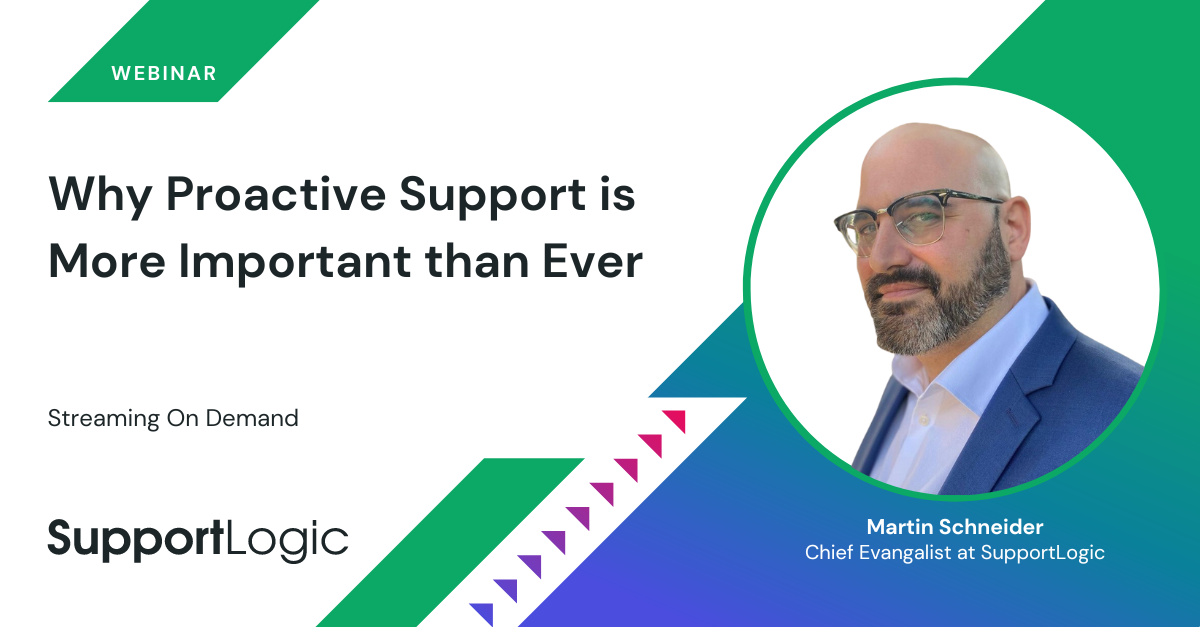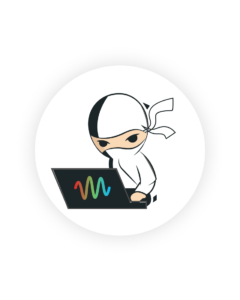
Dec 1, 2022
5 Ways Customer Success Can Use Support Data to Reduce Customer Churn
Support Experienceproactive supportChurn Reduction
Over the next several weeks, we’ll be exploring the ways Support Experience can have a profound effect on your entire organization, from IT to your product team and especially finance. First, we’ll address the value of linking Customer Success with Customer Support insights.
Say a customer logs many support tickets, but your customer success team doesn’t know about them. The success team doesn’t have a chance to step in and nurture that account. Even worse, CS may not realize there are recurring issues they could help address because they don’t have access to support data, or can’t organize and act on the data they do have.
When Customer Success harnesses customer sentiment and support data, they’re better equipped to handle these problems—and they have the precise, clear-cut data they need to convince a customer to stay. Below are 5 ways these teams can work together to retain customers and reduce customer churn.
1. Create a plan to convert your free trial and freemium customers
If your company offers free trials or freemium options, there’s ample opportunity for customer support and success to work together. Many new customers go through a free trial before interacting with anyone at your company—but there’s a way to stand out from your competitors here:
When freemium customers do reach out to support, your agents should notify the success team. From there, success can follow up with customers to see how they’re enjoying the freemium plan and answer any questions they may have about the product—even schedule tutorials if needed. This proactive nurturing helps nudge these users towards becoming paid customers. With a strong experience from support, when it comes time for the renewal and expansion discussion, they’re in a positive mental state.
One SupportLogic customer, Fivetran, found that freemium customers were more likely to switch over to paid accounts after reaching out to support and getting a positive resolution. Their support team directly contributed toward reducing their customer churn rate by 25%!
A 25% reduction is huge – especially for product-led growth companies who rely on inbound marketing, attracting customers who use the product and only get in contact if they wish to convert.
2. Analyze real-time data while onboarding freemium and expanding paid customers
Customer support and success teams should work together during the onboarding process to encourage long-term adoption. Support can share relevant data from tickets—like how often a customer is asking questions or if they’re misusing the product—so CS knows when to reach out.
If a customer has a bad experience and onboarding doesn’t go well, adoption may not happen, and that expected lifetime customer value won’t happen. But if CS knows what’s going on, they can focus on who needs the most help and who’s the most at-risk.
When customer support shares ticket data or examples of how the customer is misusing the product, this is the smoke detector – where success can use leading indicators from support’s data to see where there might be a potential “fire drill” and stop an issue. This monitoring helps keep onboarding on track, so the customer doesn’t end up with a bad taste in their mouth.
The most scalable way to measure these leading indicators is to take advantage of AI and machine learning. The unstructured data inside your support systems is usually siloed and trapped—not analyzed. Your success team can review product feedback using customer sentiment analysis, a process that uses natural language processing (NLP) to look through customer conversations and measure their emotions and moods. The NLP can find terms that suggest users in the onboarding stage might need help with the product.
Support-specific NLP also helps prevent customer churn and escalations by revleaving a customer’s feelings in real-time, allowing your team to reach out and mitigate any negative situations. Qlik, a SupportLogic customer, saw a 30% reduction in case escalations when they deployed customer sentiment analysis to their case queue.
3. Focus on customer health scores in the implementation stage
Once the customer is on board, the implementation stage begins. The customer has an understanding of the product and how to incorporate it into their everyday routine. At this stage, success should watch a client’s health score while support supplies them with the data needed to calculate that score. That data must include:
- Escalation history
- Interaction cadence
- Trends in engagement and sentiment
Success can look at those trends, see which direction the customer is heading in, and take proactive action to get ahead of an issue. When that happens, they’re equipped to steer adoption and implementation—and lead the way to upsell and cross-sell opportunities.
Using a support health score shows customer success what they need to focus on. Take a customer with a low health score: The initial glance may not be great, but if it’s trending upward the customer is at least moving in the right direction. That trend line is vital – and it’s where support can spark action. When customer success can track support operations to see where their clients are trending, they can better gauge what’s affecting that health score. They can intervene to give the customer what’s needed as it changes over time. If a customer support manager has 50 accounts, it’s easy to see which need help during the implementation phase.
These interactions give you the voice of the customer, real gems of insight that you don’t get from quantifiable data. The snapshot helps you take action from a workflow perspective, but you also get the context and insight.
Did the customer have several escalated cases that weren’t solved within the timeframe set in the SLA? Track those escalations to see if there are any common denominators—like if the escalations happened in a specific period or if the initial response time was lagging for these tickets. If there’s a common root cause, address it with your team so it doesn’t continue to affect customer churn rates.
4. Keep monitoring data and continue being proactive
After a certain period of time, the high-touch relationship with the success team tends to drop off—and customer support becomes the main point of contact. If support sees a potential at-risk customer, they can inform the success team. That way, they aren’t blindsided when it’s time for the customer to renew. Those indicators will be there, and if they’re monitored, there’s a chance to save the relationship.
Support can watch client problems and usage data, then supply that information to the success team. If the support health score indicates a risk of churn, then it’s time for success to rank that client. Types of common indicators to watch out for during this stage include:
- Escalated support cases: If a client has many cases that aren’t quickly solved, that can lead to unhappiness.
- Language in their tickets: Has the client started using words like “underwhelmed” or “disappointed”? Are they mentioning a competitor? Those can be red flags that the success team needs to know about.
- Amount of cases: If the client starts to file many complaints about the product, maybe they’ve hit a wall or need extra help with a new upgrade or functionality.
This data is valuable if you’re using the right tools to collect it, analyze it, and serve it up to success. With those metrics, your success team can get ahead of any potential issues that lead to churn. They can document what’s happened, tell the client how they solved any problems, and offer potential incentives to build that customer relationship.
SupportLogic collects those metrics. You can track health score, customer sentiment analysis, and escalations all in one spot. Plus, you can also set certain accounts as favorites and receive proactive alerts about them when issues pop up in your dashboard. Monitoring this data and communicating with support has been proven to help reduce customer churn.
5. Encourage retention by showing customers how support helped them
To retain customers and encourage upgrades, success teams must remind customers of the excellent support they’ve received from their brand. Types of data your success team could get from your support team include:
- How your support team met with the customer every time they submitted a ticket
- If the support team provided service faster than their estimate
- If cases were all solved within the service-level agreement window
- If cases were never escalated to a manager and instead solved quickly
Customer support can help the success team by creating a handy dashboard that displays the data and tells the right story for each client. Present the customer with the value of your support team and show them that your team held up its end of the bargain. When your success team is armed with this type of data from support, it helps them present an ironclad case when it’s time to renew or upgrade.
Customer success can also point out how their client successfully used certain features of their program and try to upsell them. If the client upgrades to a different tier, they could get new benefits that streamline their processes even more.
It’s important to bring this positive support data to the customer sooner rather than later. So if the client is on a 12-month contract, your success team should start talking to them in month nine while armed with this valuable data from support.
SupportLogic organizes data on how support responds to tickets, how support avoided escalation, and more. With constant monitoring, your team will always have the information they need to present a case for renewal or upgrade to a customer. Tracking a customer’s experience from onboarding to the renewal point is invaluable and gives your success team so much more data than collecting static surveys.
Create a churn-resistant culture
When you bring support and success together, both teams are able to focus on your customers throughout the entire lifecycle and reduce churn as much as possible. That collaboration leads to a churn-resistant culture, which leads to your company having a higher rate of customer satisfaction and a larger revenue stream.
The tools you need to connect support and success are available with SupportLogic. If you’re ready to improve your customer retention strategies, we’re here to help.
Contact us today or tour our workflows to see the power of our platform.
Don’t miss out
Want the latest B2B Support, AI and ML blogs delivered straight to your inbox?





